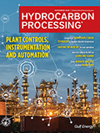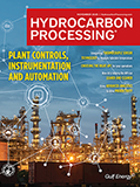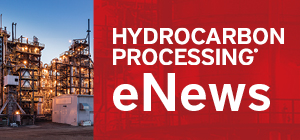Reactors
Implement innovative corrosion management solutions for biofuel refining—Part 2
The production of carbon-neutral and renewable transportation fuels is growing rapidly, driven by the need to find feedstocks beyond fossil resources. Environmental, social and governance (ESG) initiatives—along with accelerated consumer demand for sustainable and carbon-negative fuel products—are also driving demand.
Advanced hydrocracking unit flow scheme optimization and integration approach to maximize refinery margins for a residue upgrading project
The integration of a solvent deasphalting and hydrocracking upgrading complex provides a favorable techno-economic return for residue upgradation at relatively lower capital expenditures vs. other alternatives for a brownfield project.
Sharing insights beyond the fencelines with digital technologies
In refineries and petrochemical plants globally, breaking down silos and barriers among departments, teams and functions remains one of the largest challenges when it comes to processing data and operational insights.
Refineries’ pandemic turmoil—KNPC’s gasoline demand: Opportunities and challenges
The COVID-19 pandemic is regarded as one of the most exceedingly difficult challenges faced in the oil and gas industry's history.
Riding the dragon: Sulfur plant thermal reactor temperature measurement
Of all the fundamental measured process variables, temperature is perhaps the most reliable.
Marathon Petroleum implements Topsoe technology at Martinez renewables facility
Marathon Petroleum’s refinery in Martinez, California (U.S.), has been repurposed to produce renewable diesel--using Topsoe's HydroFlex technology--through the company’s joint venture with Neste.
Reliable naphtha reforming catalyst testing
Naphtha-to-gasoline refining plays a significant role in the petrochemical refining industry.
Defossilizing the FCCU via co-processing of biogenic feedstock: From laboratory to commercial scale
Oil demand is expected to reach record highs this year1 after a sharp rebound following the COVID-19 pandemic.
Critical considerations for retrofit designing a platformer reactor’s partial bypass piping in a NHT plant
The naphtha hydrotreater/continuous catalyst regeneration (NHT/CCR) platformer produces reformate to be utilized as a blending stock in the gasoline pool (FIG. 1).
Complete hydroconversion of crude oil to light hydrocarbons
One of the prevailing factors of the energy transition toward a low-carbon energy system is that the decarbonization of transport will lead to the contraction of the main markets in which crude oil refining products are sold.

- Honeywell to supply integrated automation systems for flagship UK carbon capture projects 12/4
- Aduro Clean Technologies collaborates with ECOCE to advance plastics recycling in Mexico 12/4
- FincoEnergies launches GoodFuels B15: A reliable and compliant drop-in biofuel for inland shipping 12/4
- DevvStream, Southern Energy Renewables target low-cost, carbon-negative SAF and green methanol 12/4
- AFPM: Revised fuel economy standards would put CAFE back on solid legal footing 12/4
- ITT introduced a secondary containment system for its ICM metallic magnetic drive process pump 12/4




